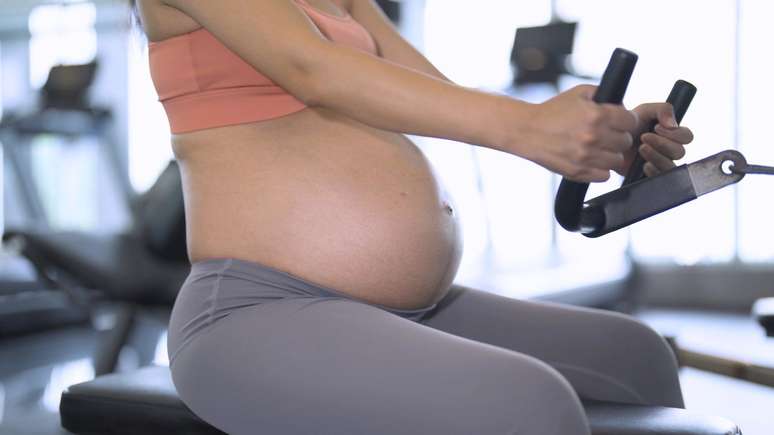Practicing physical exercise during pregnancy is essential for the health of the pregnant woman and the fetus, but it is necessary to take some precautions
Exercise is essential for a healthy life, however, during pregnancy, some women may worry that exercise may harm the pregnancy, mainly due to the impact. However, it is during this period that pregnant women should exercise.
Exercise during pregnancy is beneficial not only for the pregnant woman but also for the fetus. According to Bruno Teixeira, professor of physical education at the University Veiga de Almeida (UVA), exercise is important to ensure that weight gain during pregnancy is not excessive.
“Excessive weight gain in the mother increases the risk in case of cesarean section, as she can give birth to babies who are large for their gestational age, creating a greater risk of a difficult birth. It is also harmful to the health of the newborn itself. Babies born with more than 4 kg are at greater risk of being obese and of developing cardiovascular problems and diabetes. Mothers who do physical activity reduce the risk of their child becoming obese by up to 61%”, explains the specialist.
The estimated weight gain during pregnancy is 1.6 kg in the first trimester and 400 grams per week in the remaining trimesters. For those who already suffer from obesity, the recommendation is not to gain weight in the first trimester, since in the subsequent period the risk of the child gaining excessive weight increases. Statistics, however, record that 50% of pregnant women exceed this guideline.
Benefits of exercise during pregnancy
- Mothers who exercise can prevent the risk of weight gain by 18% to 61% during pregnancy;
- Training can also prevent diabetes and gestational hypertension, reduce depressive and anxious symptoms, strengthen the pelvic floor, which is important for a good natural birth and to reduce the risk of urinary incontinence and also prevent the baby from being born overweight;
- Hypertensive disorders affect a reasonable percentage of pregnant women, complicating pregnancy. Exercise, in turn, reduces the risk of developing the disease during pregnancy by between 39% and 41%.
How should pregnant women exercise?
For exercise to have a protective effect, training should be done at least three times a week, in 30- to 45-minute sessions throughout the pregnancy. Aerobics and weight training should be done together. Aerobic exercises include a stationary bike and a treadmill.
“Variation between aerobics and strength training is perfect. Just do an activity that you enjoy because adherence is extremely important and will also avoid the difficulty of losing weight after giving birth,” Teixeira emphasizes.
Stretching and yoga exercises are also important and can be included, as they guarantee flexibility to the mother, helping a lot during childbirth, as well as, during pregnancy, preventing lower back pain due to the growing belly and weight gain.
Pay attention to practicing some exercises
The so-called supine position – when the pregnant woman lies on her back – must be performed with great care starting from the 20th week of pregnancy. This is because this position can compress the inferior vena cava, preventing blood from returning properly to the heart. It can also obstruct the aorta and the inferior vena cava itself.
According to the professional, the movement is not prohibited, but it must be fast and, ideally, the pregnant woman should sit down again after each performance. Or simply replace it with exercises on other equipment, which would be more prudent.
Pregnant women should avoid impact and jumping activities, such as jumping, spinning (depending on the intensity), cycling on the street (due to the risk of falling), basketball, soccer, dodgeball, and volleyball, among others. The choice of activity must be in accordance with the level of conditioning and previous experience of the pregnant woman.
The temperature of the environment in which you exercise is also very important. This care is due to the heat exchange between the mother’s body and that of the fetus. To dissipate body heat, the mother uses different mechanisms. The fetus, however, will depend exclusively on its body to relieve the heat. Ideally, the room temperature should not exceed 25 degrees and the relative humidity should be around 45%. For aquatic activities in heated pools, the water should have a maximum temperature of 33.5ºC.
Source: Terra
Ben Stock is a lifestyle journalist and author at Gossipify. He writes about topics such as health, wellness, travel, food and home decor. He provides practical advice and inspiration to improve well-being, keeps readers up to date with latest lifestyle news and trends, known for his engaging writing style, in-depth analysis and unique perspectives.







